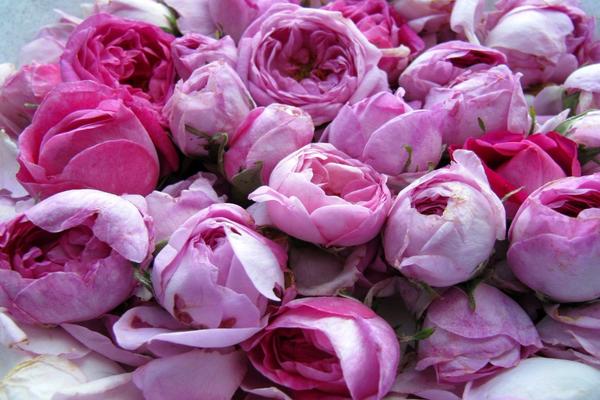
10 ml
Carnation helps one recognize the divine reality substantial to the world of things, lives and minds; a way of being that finds in the soul something similar to, or exactly as divine reality; the understanding that places humankinds’ knowledge of the inherent and transcendent ground of all being – the center that is immemorial and universal – everything interpenetrates, and is interpenetrated by everything else; as with the moon, plants, us—the part is the whole.
In this case carnation will help us explore, the interconnectedness of the moon, plants and you.
Carnation is sacred to several moon goddesses including Artemis and Diana (who rule wild vegetation) and is one of the flowers associated with the astrological sign Cancer, who is in essence the moon. The glyph for Cancer is the male and female seeds, the archetype of Cancer is the cosmic womb in which the seeds of intuitive creativity, imaginative creativity, practical creativity, burst forth in diverse ways—biological, artistic, and structural. She also drives us to explore our primal mother in her energy of nurturer and fosters a strong desire to care-take, small fragile things such as, literal plant seeds, and nurture them into adulthood. She encourages us to understand the divine role of the plants as food and how they nourish and caretake us.
Marina Heilmeyer expresses in her book The Language of Flowers, carnation has had so many meanings over time, including: being associated with Artemis as an apology for flying into a rage and killing a man, Napoleon choosing the red carnation as the symbol of the Legion of Honour, the English the upper-classes turning up their noses and declaring it a ‘workers flower’. A symbol of death, The Roman Catholics claimed it for the Virgin Mary, during the middles ages it came to symbolize love, fertility and betrothal, it was associated with vanity and pride, the poets reclaimed it as the flower of friendship, because it keeps it color to the last, in 1907 it was declared the official flower of Mother’s Day in the United States.
“With so many contradictory meanings and associations, it is a little wonder that the carnation was also referred to disparagingly as merely a fashionable flower of no great meaning.” 1
I would argue the mutability and changeability of the carnation, is in fact its gift and strength. The essence of the moon and humankind, having the same central impulse to be ever changing. And thank goodness we do! Or we would be a rather dull lot.
The moon is the celestial body nearest the Earth, the moon’s kinship with the planet is evident in the protectorates of lunar deities who have watched over us and our food supply. Embodied by the cow-headed Hathor, whose milk nourishes the world, Nana-Sin kept a watchful eye over shepherds and herds, the black-cloaked Isis, who’s, misty radiance nurses the happy seeds under the soil, and Herse the goddess of the dew, a daughter of moon goddess Selene, her moisture nourishes the plants of the earth.
Historically it was taught, the moon presides over agriculture cycles of sowing and reaping and over every type of coming into being. That she is the mistress of moister, the juice of life including, sap, semen, menstrual blood (the average menstrual cycle lasts for about 29 days, the same as the lunar cycle) and the nectar of plants. She governs the moister that falls as rain or dew, the ebb and flow of every body of water. All types of fecundity.
Nick Kollerstrom, wrote in 1999 in his book Planting by the Moon:
“Many people who would not now suppose the Moon to hold water, rain or dew, nor believe it to be the fertilizing power in human and animal conception, will yet sow their seeds in the waxing and full of the Moon, and harvest their fruits in the waning.” 2
Growing up I was taught, that radishes germinated more quickly at the Full Moon, so you would start your seeds then. The Dark Moon was for planting root vegetables.
Connecting to Diana and Artemis by working with carnation, will help you connect to and be able to follow the natural rhythms of vegetation and what makes them happy. Such as planting by the moo
The basic idea behind gardening by the moon is that the cycles of the Moon affect plant growth. Just as the Moon’s gravitational pull causes tides to rise and fall, it also affects moisture in the soil.
So, it is believed that seeds will absorb more water during the full Moon and the new Moon, when more moisture is pulled to the soil surface. This causes seeds to swell, resulting in greater germination and better established plants.
Moon phase gardening takes into account two periods of the lunar cycle: the time between the new Moon and the full Moon (the waxing of the Moon), and the time between the full Moon and the new Moon (the waning of the Moon). It’s considered best to plant certain types of plants during the waning of the Moon and other types during the waxing.
The Moon also impacts plant growth through geotropism—which is how plants grow in response to gravity. Roots grow downward in the direction of gravitational pull and stems grow in the opposite direction (i.e., upwards). If you plant tomatoes, peppers, cucumbers, or green beans in special containers designed to hang upside down. The plants once hung upside down will respond to geotropism and begin to grow upwards.
To plant by the Moon:
Plant your annual flowers and fruit and vegetables that bear crops above ground such as, tomatoes, lettuce, melons, peppers. Carnations are an edible flower! This is the correct time to plant them (after you harvest them, sprinkle their petals on salads, use in spring rolls, or freeze in ice cubes). During the waxing of the Moon—from the day the Moon is new to the day it is full. As the moonlight increases night by night, plants are encouraged to grow leaves and stems.
Plant flowering bulbs, biennial and perennial flowers, and vegetables that bear crops below ground such as onions, turnips, carrots, and potatoes. during the waning of the Moon—from the day after it is full to the day before it is new again. As the moonlight decreases night by night, plants are encouraged to grow roots, tubers, and bulbs.
In astrology generally, the Moon is associated with the food we eat, the act of cooking is a lunar thing in and of its self and the more you cook the lunar you will become. “Gardening is also a quintessential lunar activity. If you grow your own food, then cook it yourself: you will be immersed in the Moon’s gentle vibration!” 3 Using carnation will help you have a deeper relationship and understanding of the plants you cook, eat, and grow. If gardening is not your hearts delight, carnation will encourage a relationship with the wild vegetation that surrounds you.
PART USED ~ Flowers
EXTRACTION METHOD ~ Absolute Extraction (Hexane Free)
ORIGIN ~ France
NOTE CLASSIFICATION ~ Middle Note
(c) all rights reserved

![]()

....
To explore the magical role of food and how it can powerfully create ways of being see Vibrational Nutrition: Understanding the Energetic Signatures of Food
- Heilmeyer, Marina. © Prestel Verlag, Munich . London . New York . 2001. Translated from German by Stephen Telfer, Edinburgh. Edited by Christopher Wynne, Munich. The Language of Flowers: Symbols and Myths
- Kollerstrom, Nick. Planting by the Moon a Gardner’s Calendar, 1999, Totnes, Devon, Prospect Books, London. 1998
- Guttman Ariel & Johnson Kenneth. Mythical Astrology Applied: Personal Healing Through the Planets. 2004, Llewellyn Publication, St. Paul, MN.


